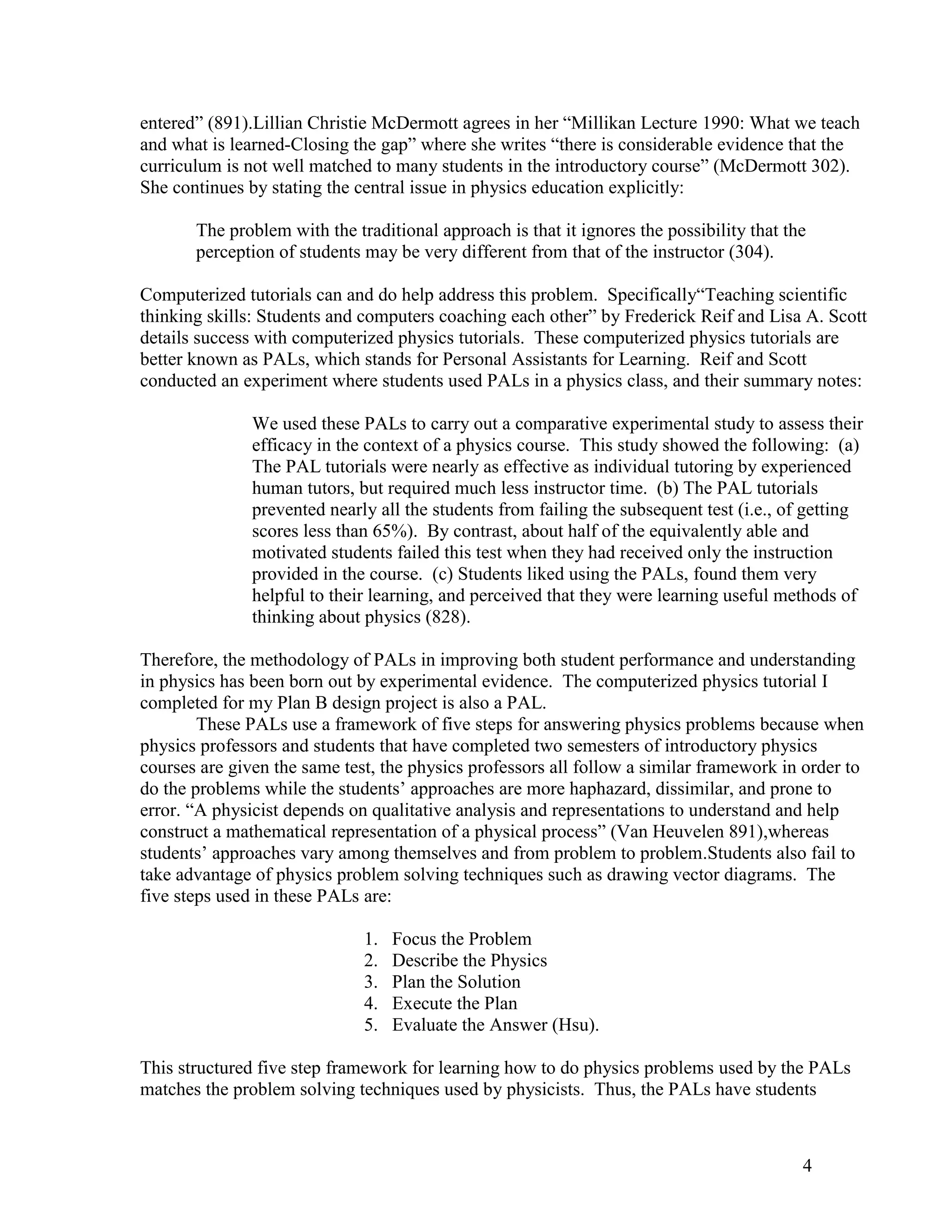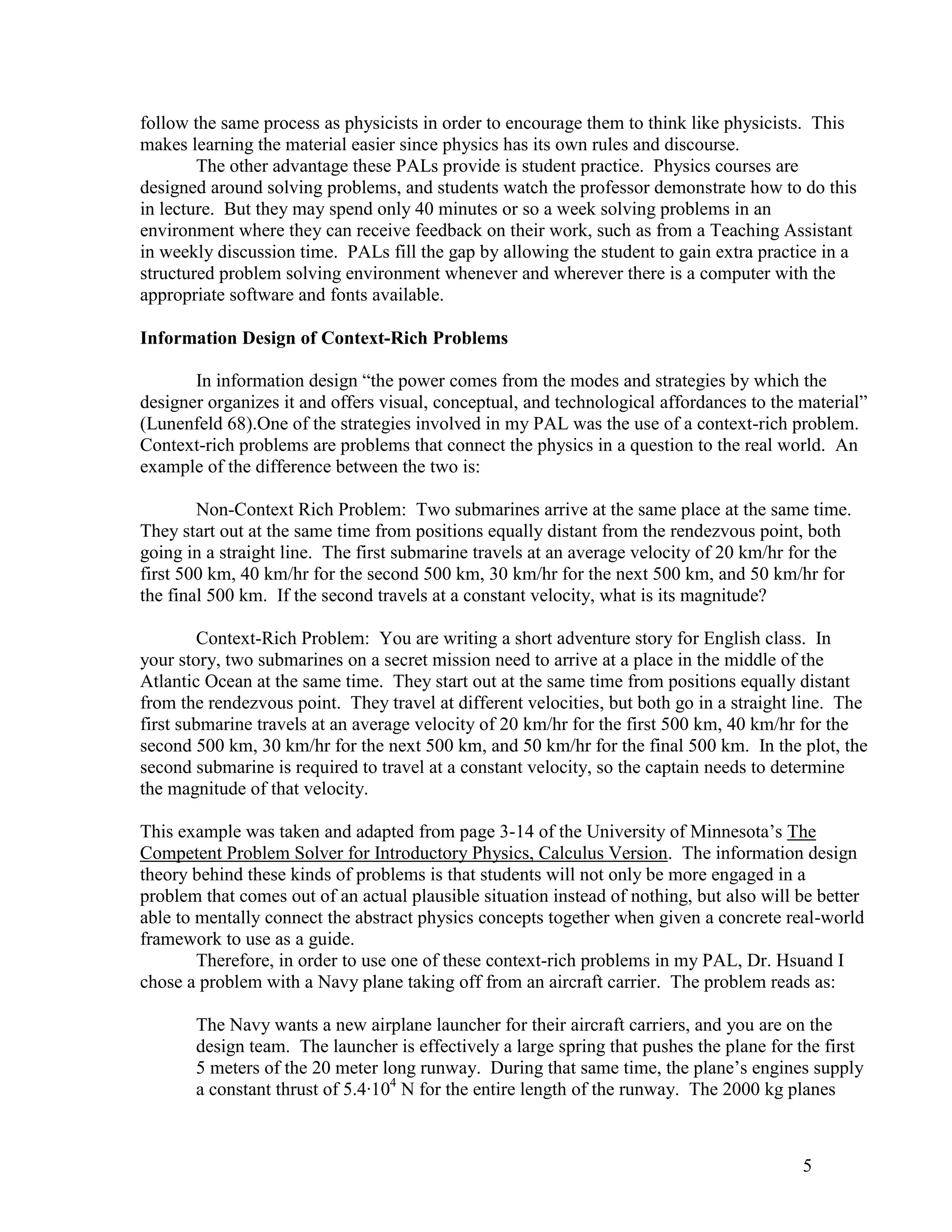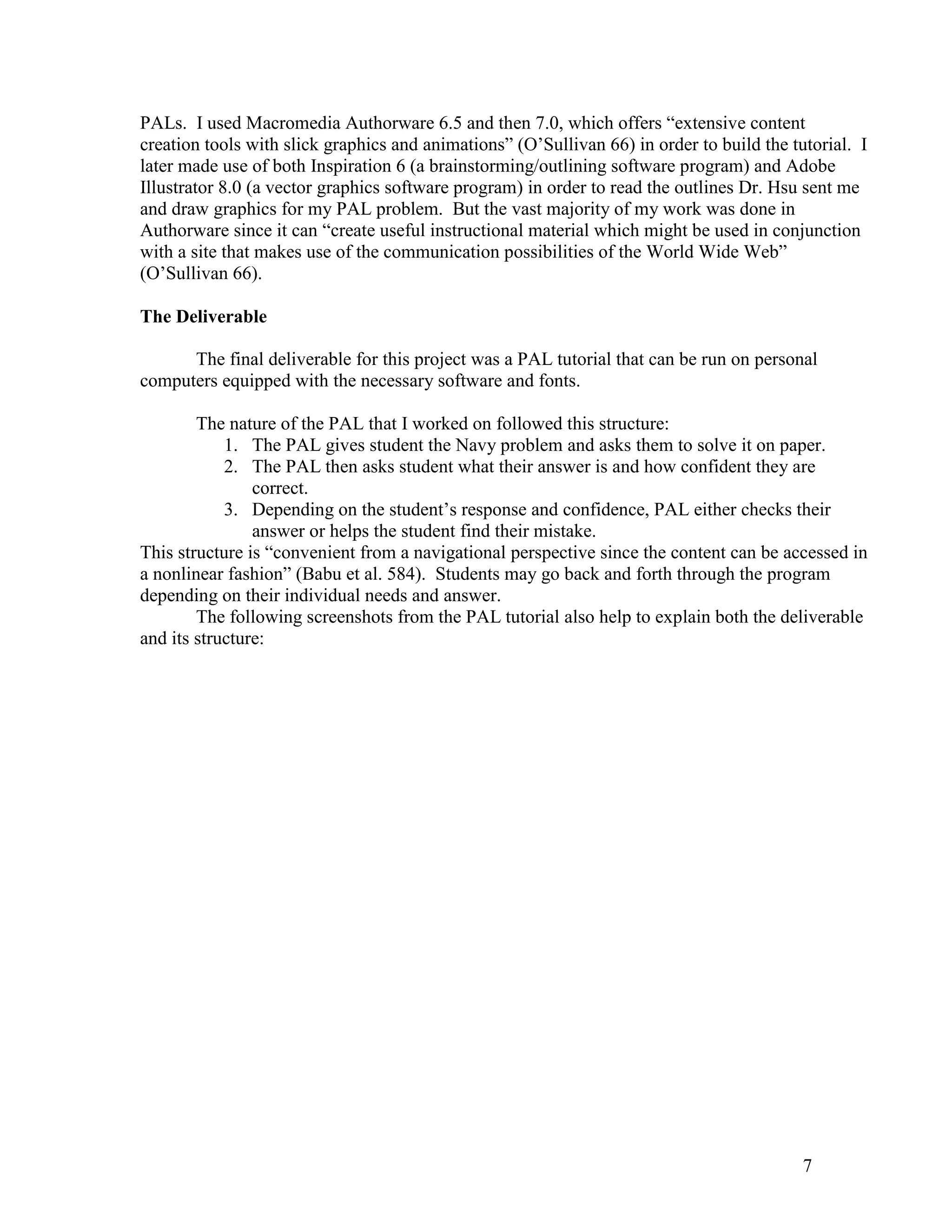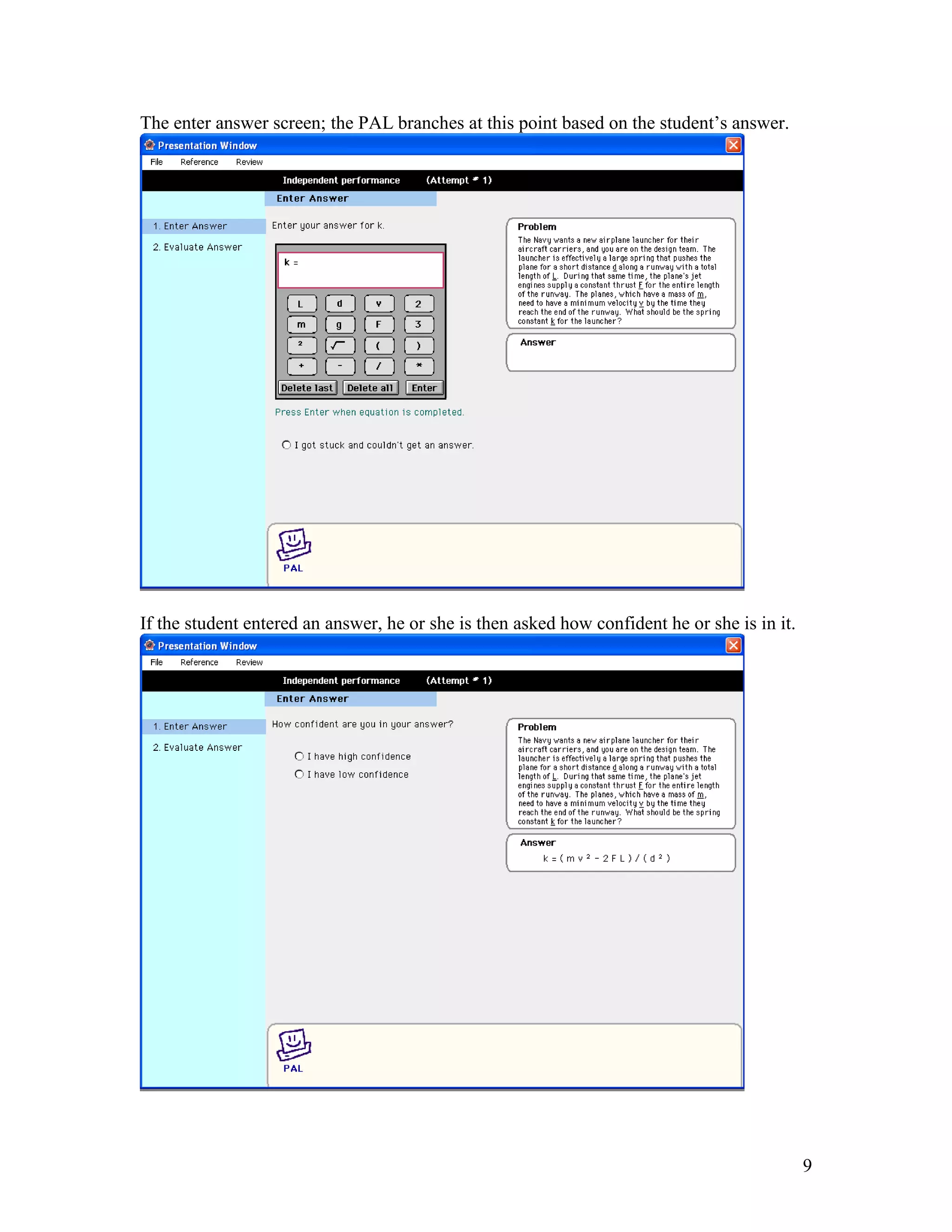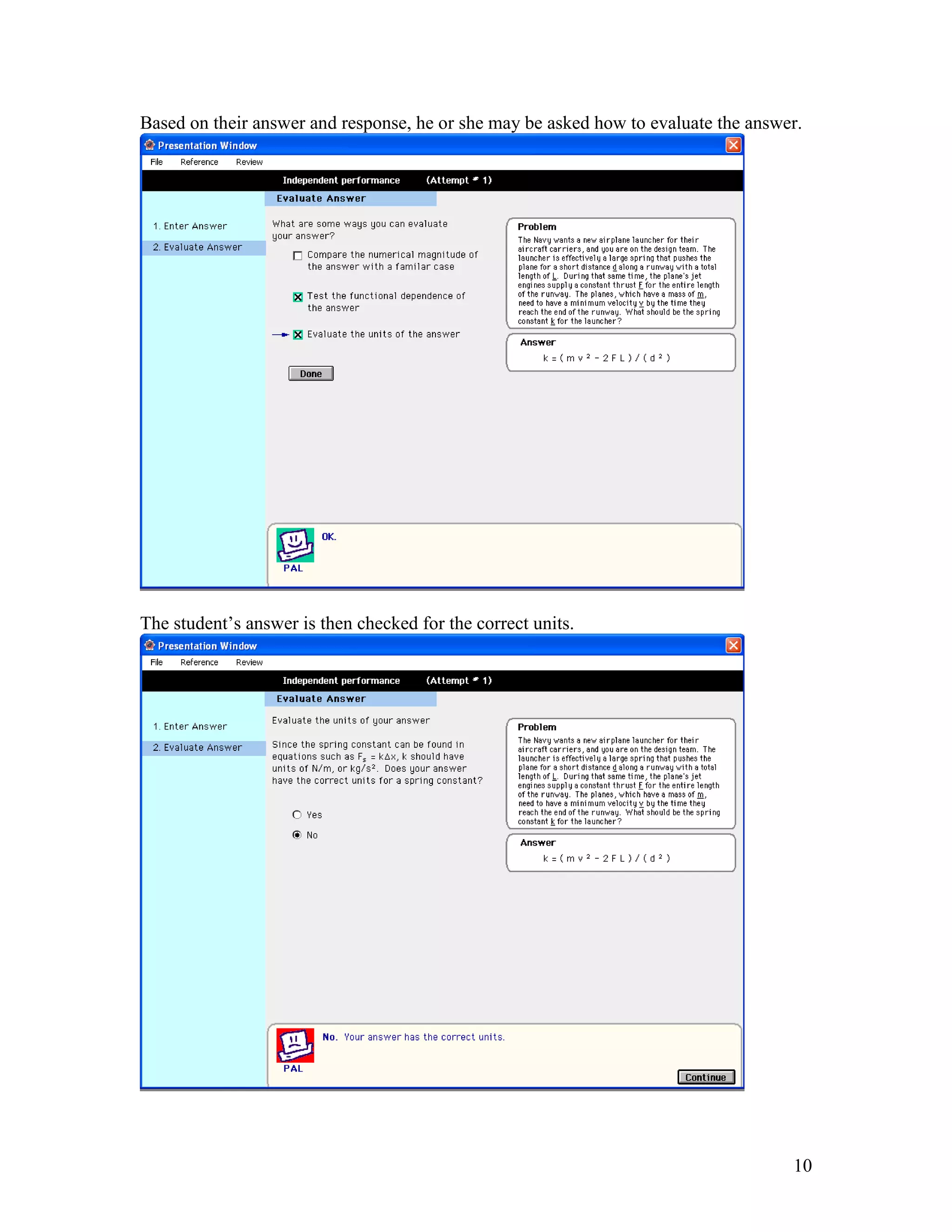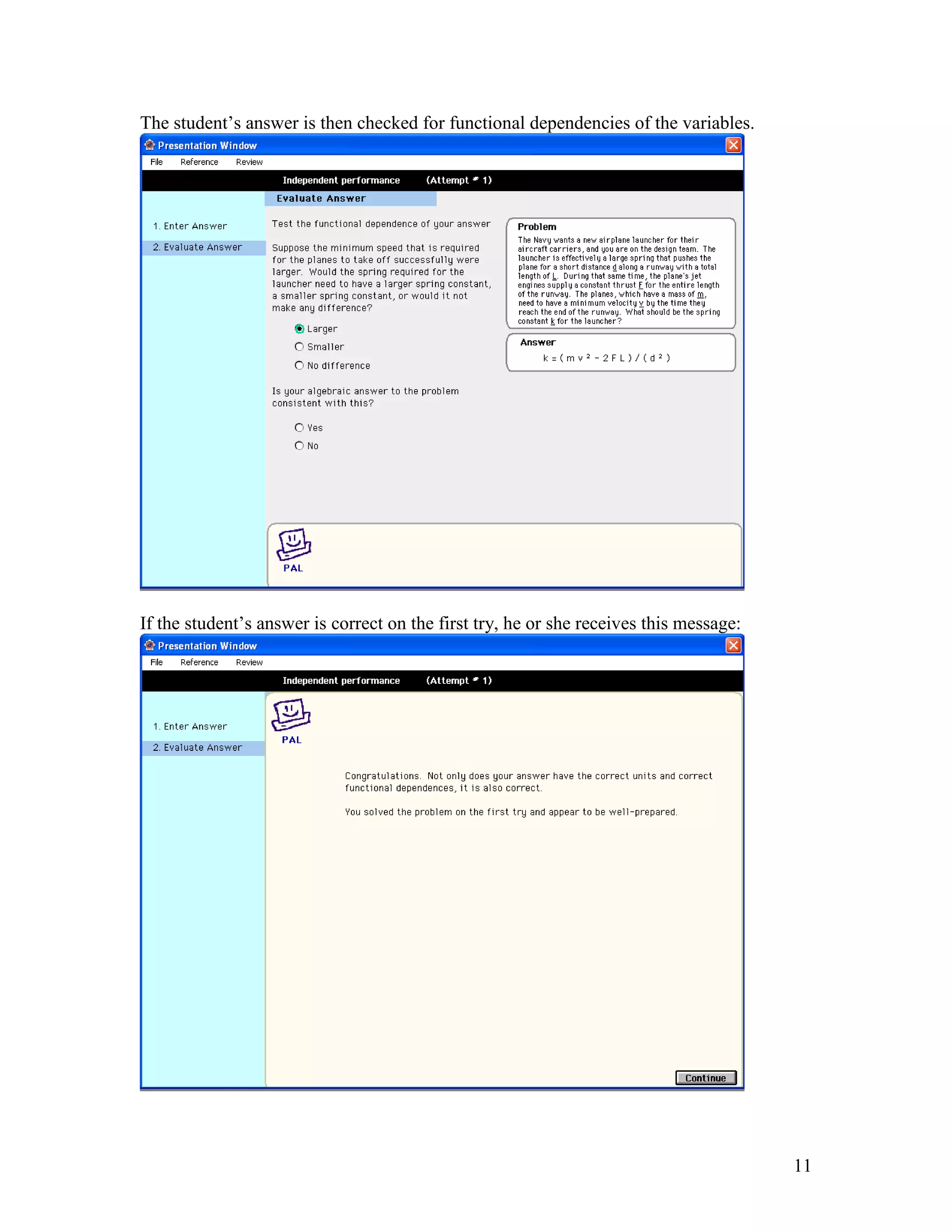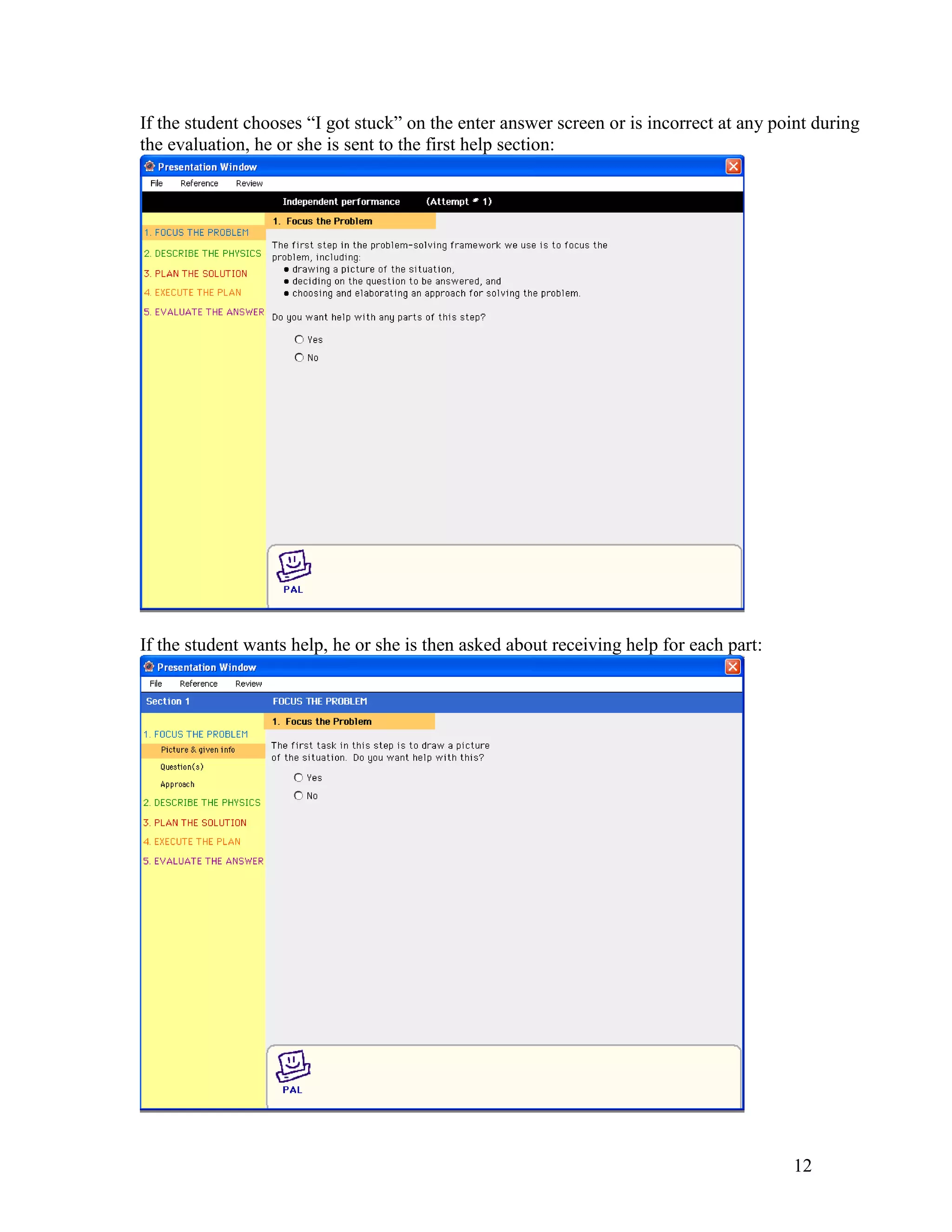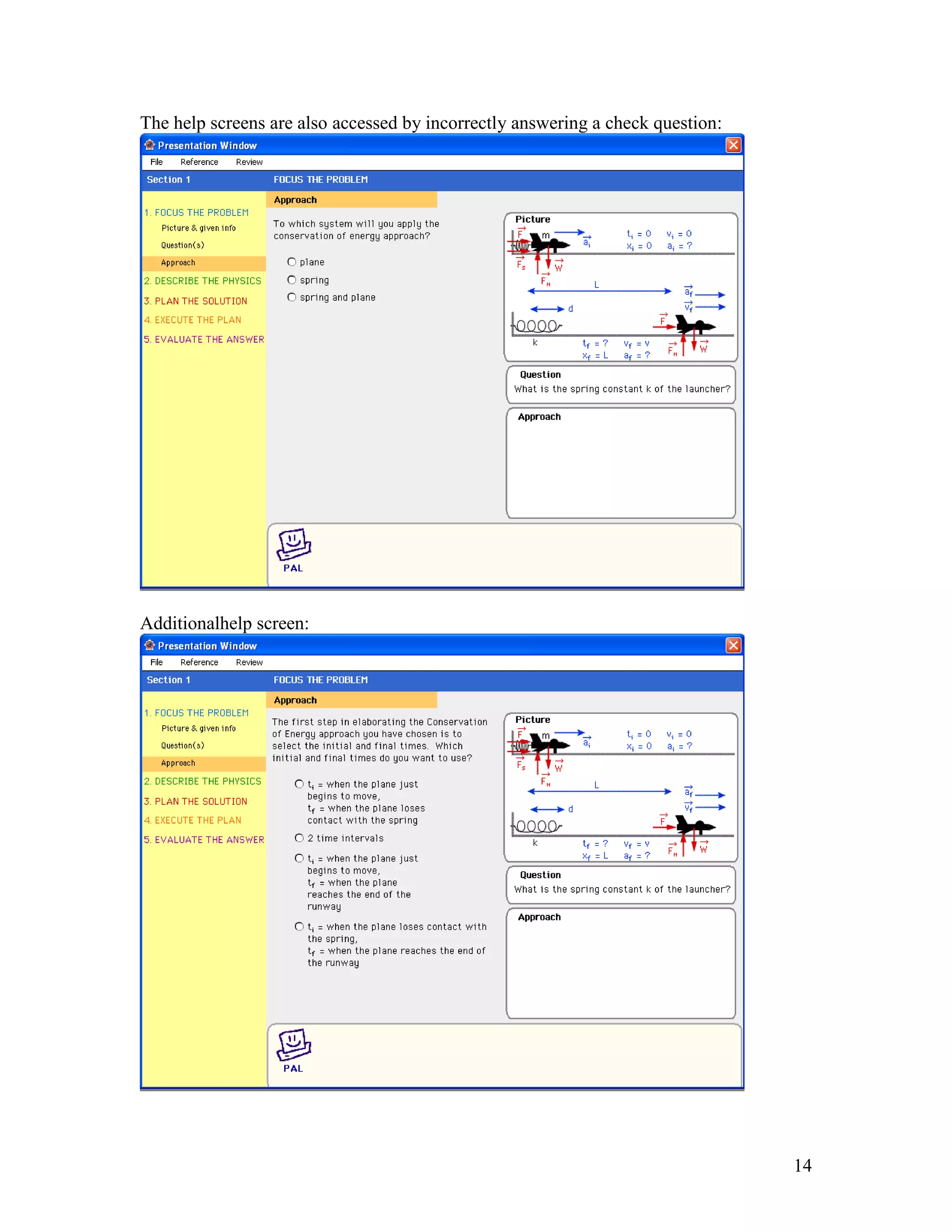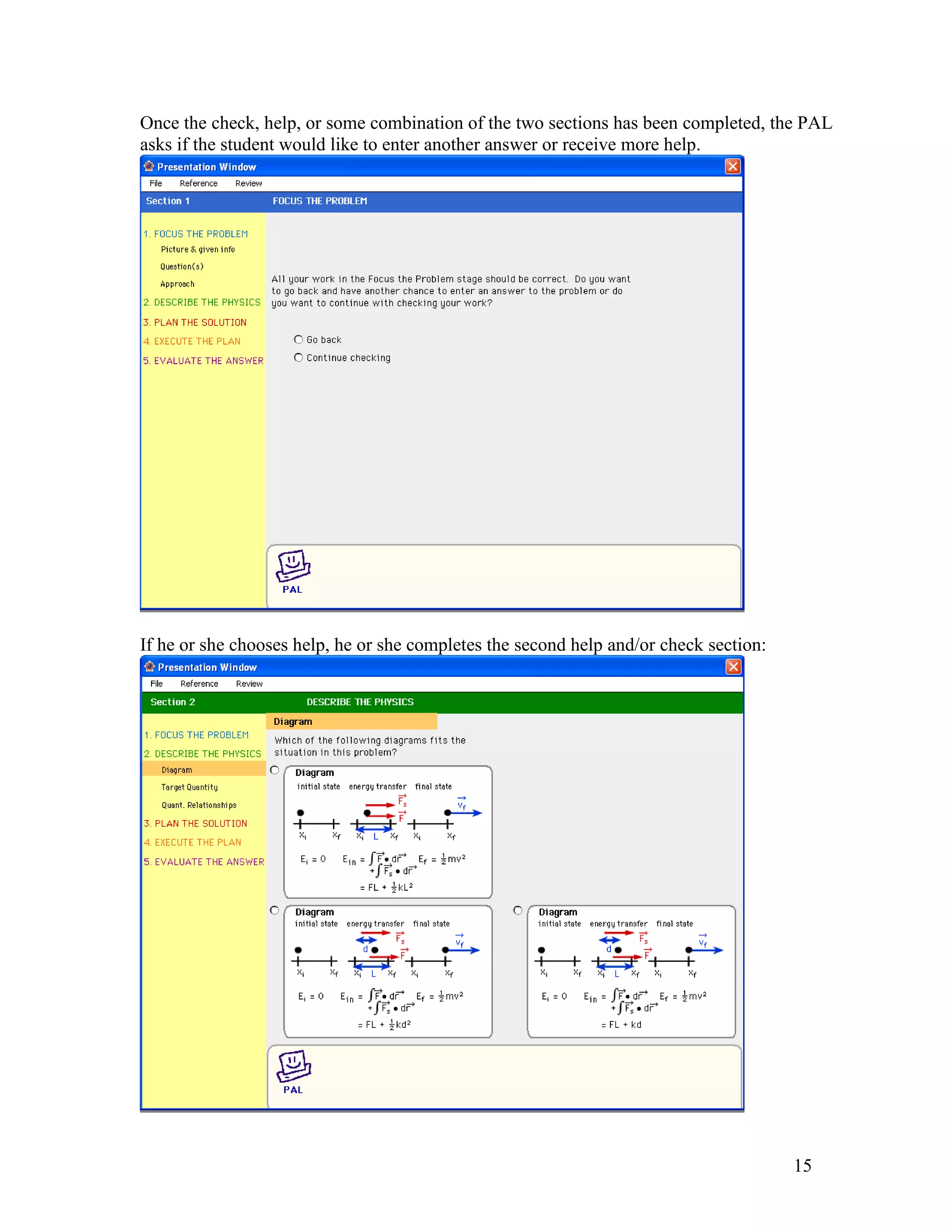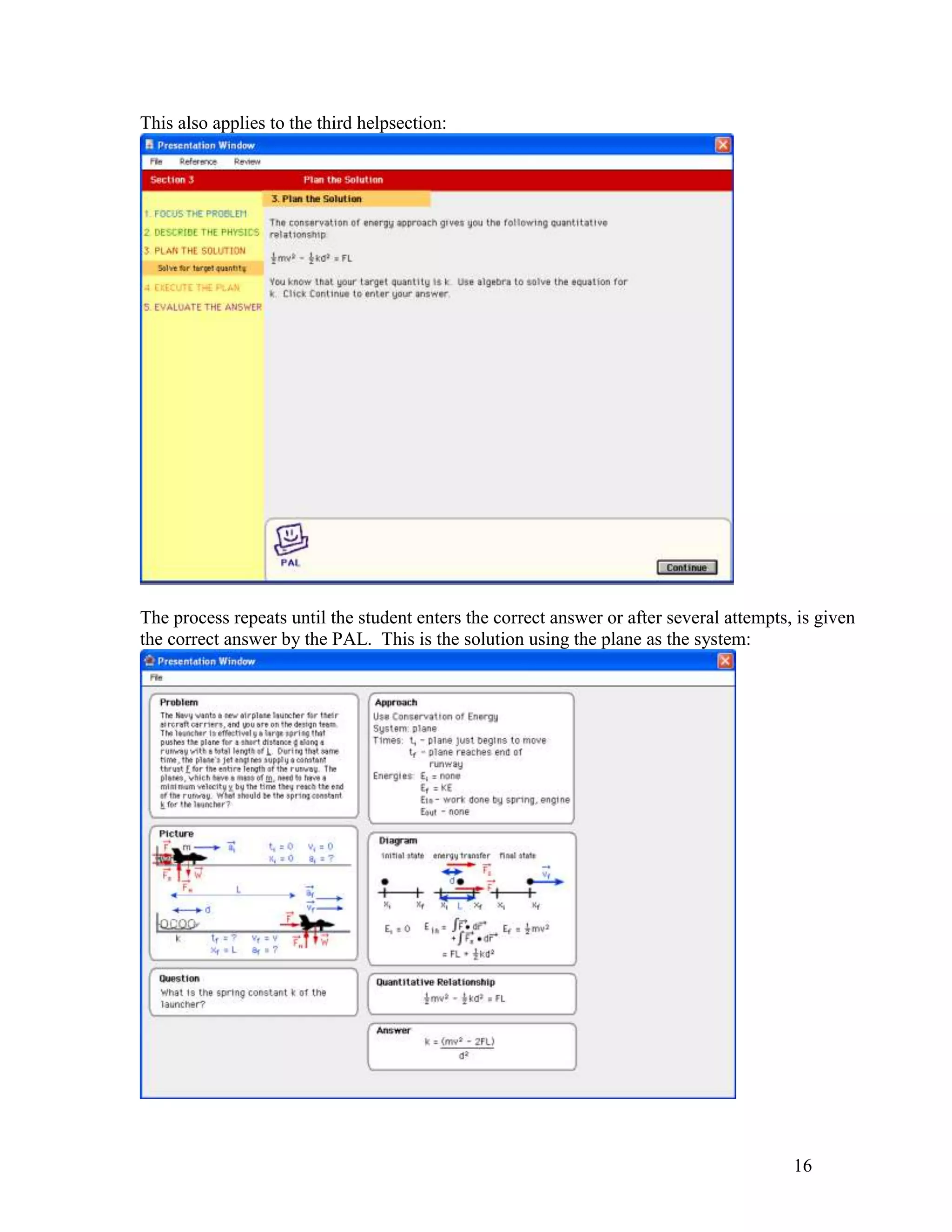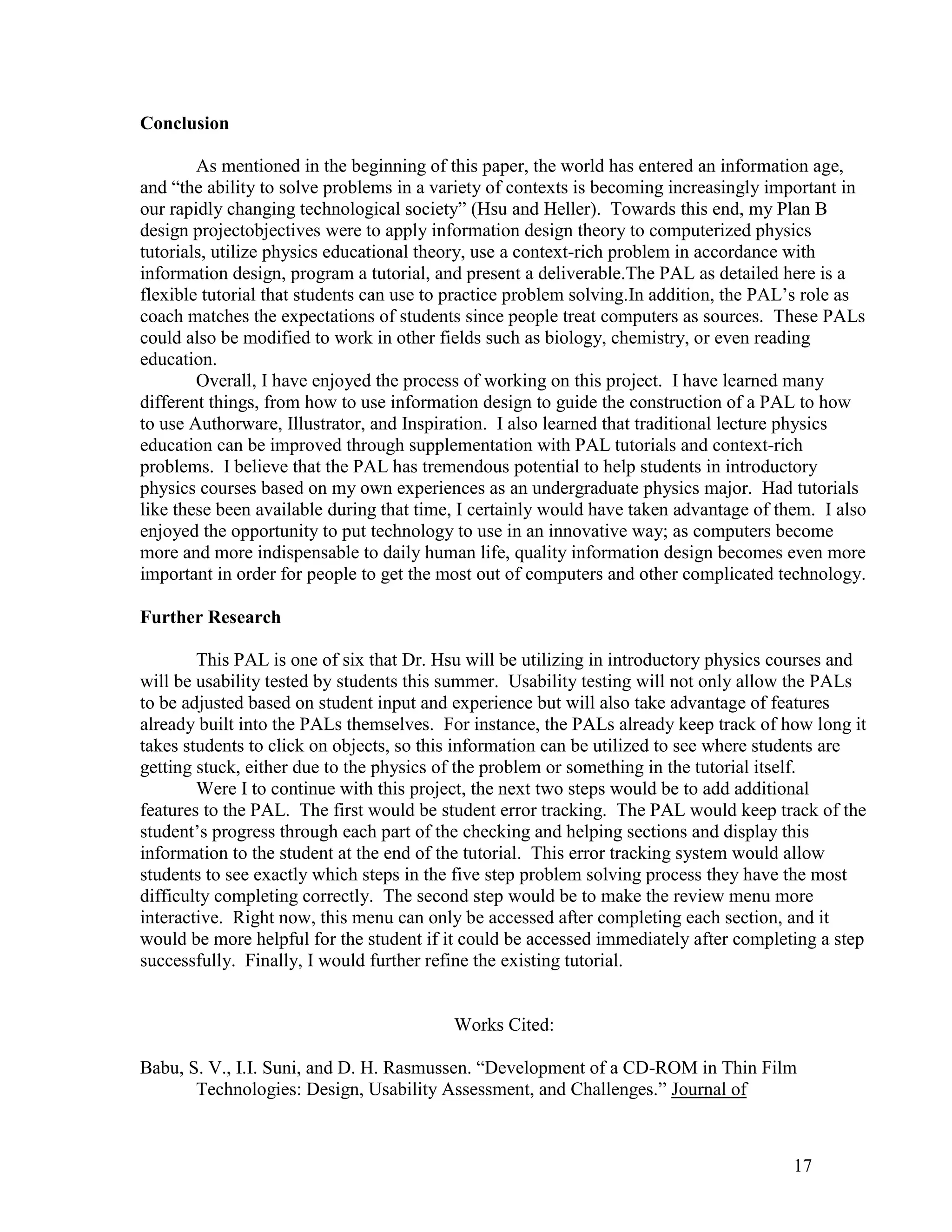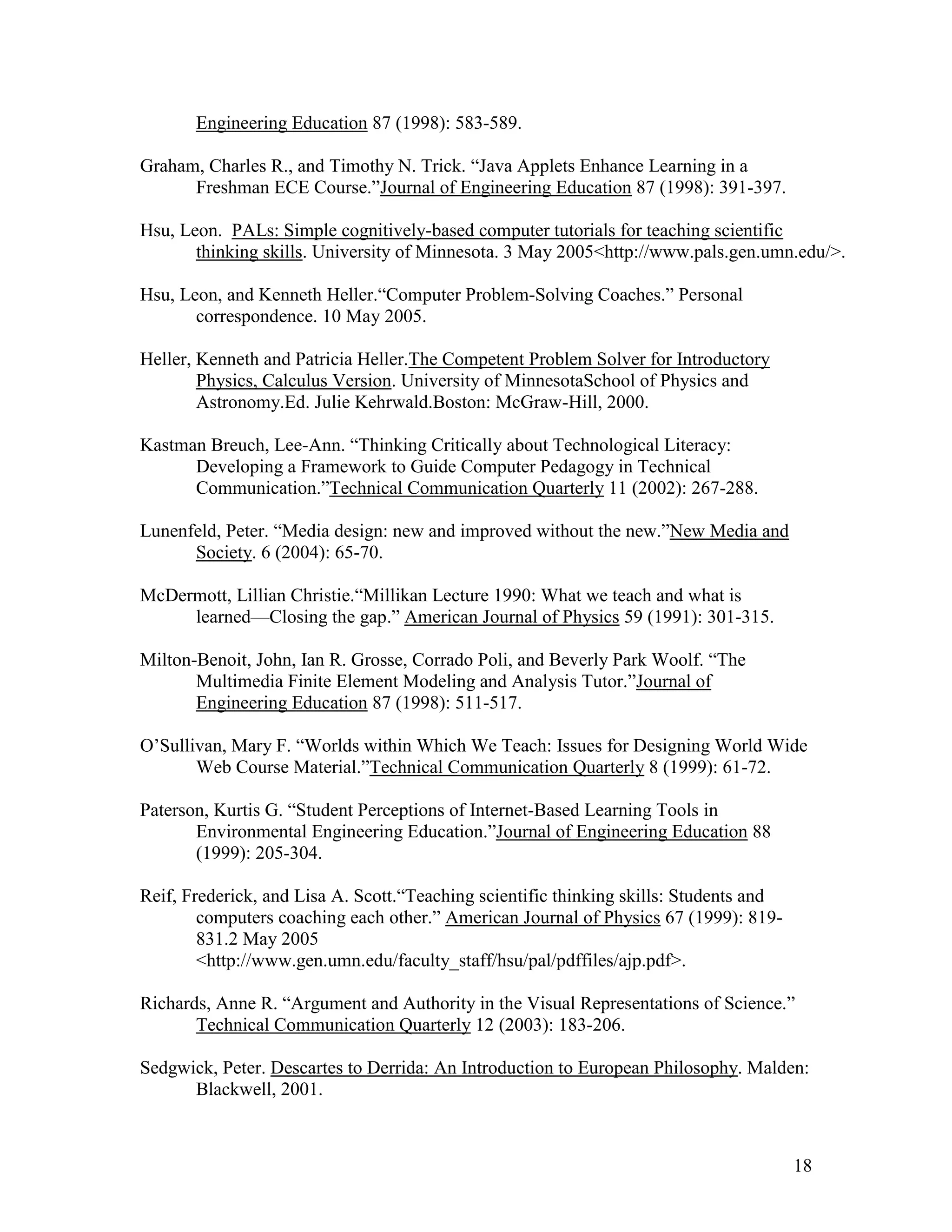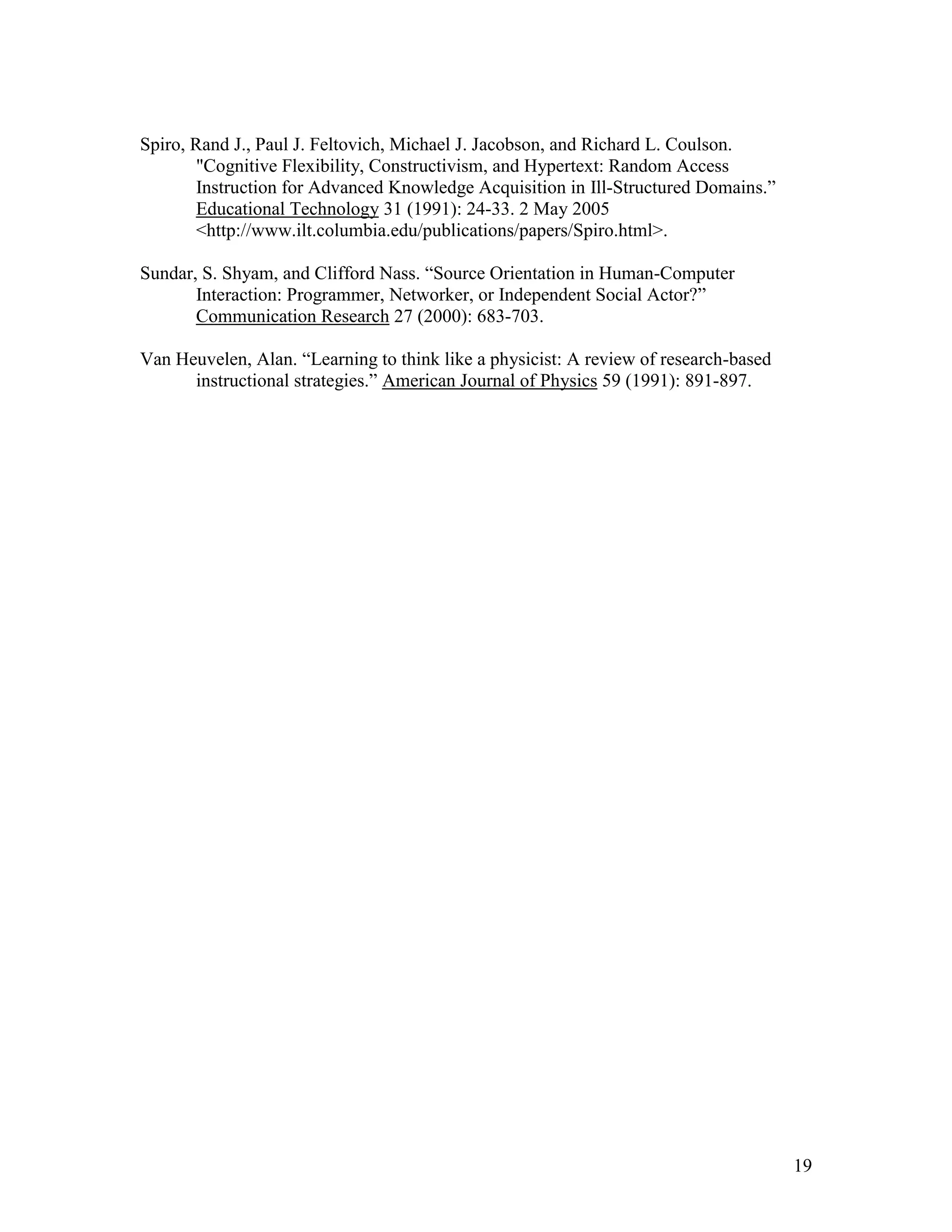This document summarizes an article about the design of a computerized physics tutorial created for a Plan B design project. The summary discusses:
1) The project involved building an introductory physics tutorial using information design theory and a context-rich problem about launching an airplane from an aircraft carrier.
2) The tutorial was programmed using Authorware software and follows a structured 5-step problem solving process used by physicists.
3) The final deliverable was an interactive computer tutorial that guides students through solving a physics problem and checking their work, allowing nonlinear navigation through the content.
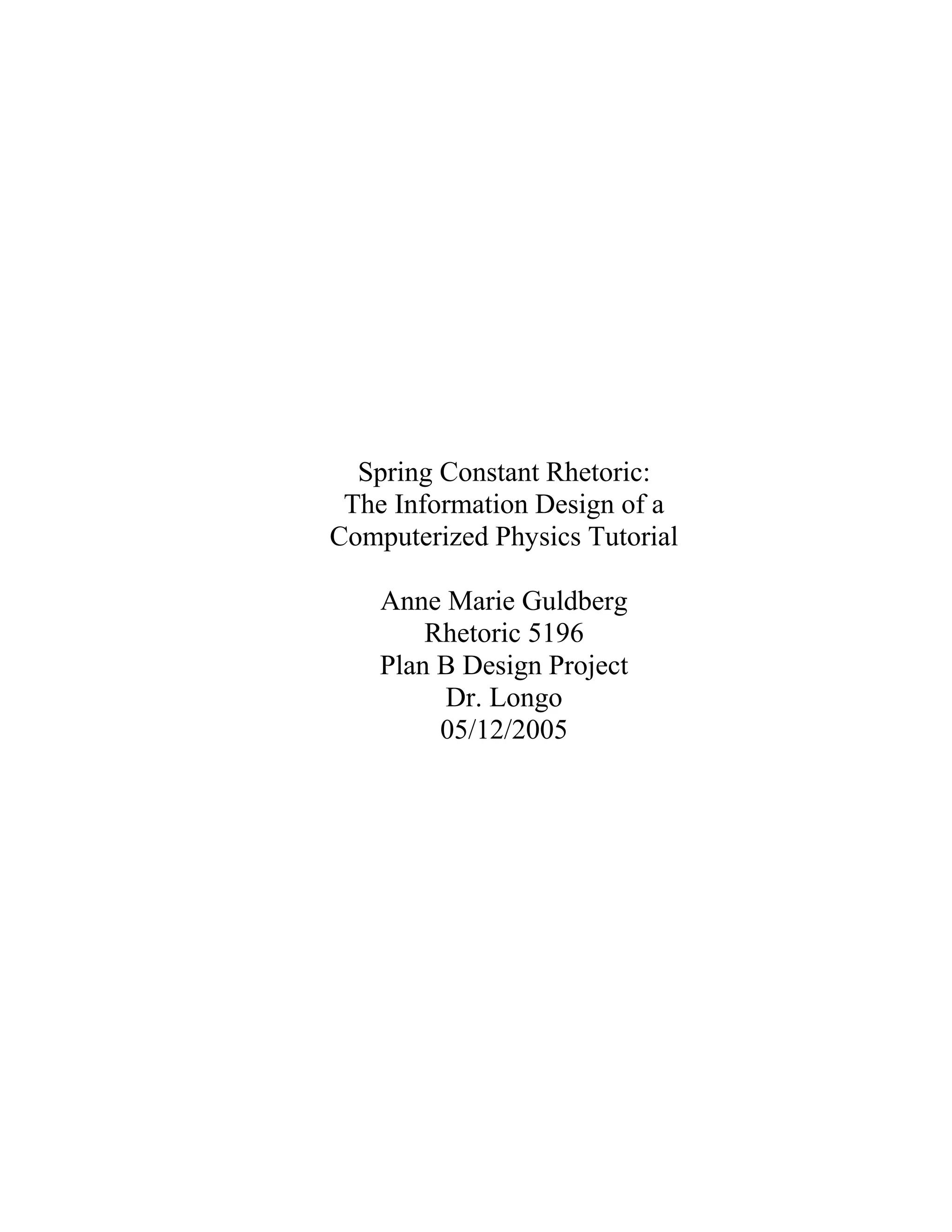
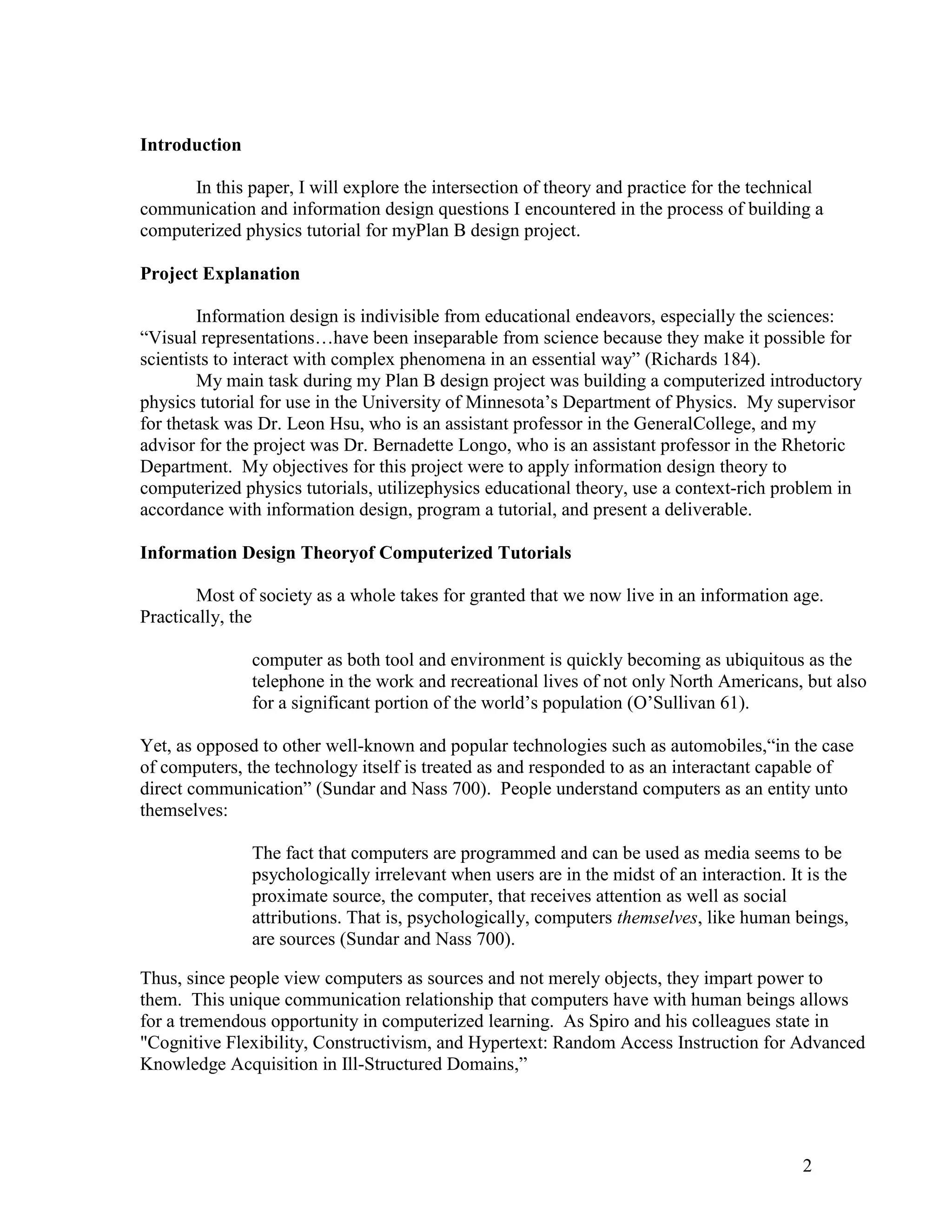
![The computer is ideally suited, by virtue of the flexibility it can provide, for
fostering cognitive flexibility.In particular, multidimensional and nonlinear
hypertext systems, if appropriately designed to take into account all of the
considerations discussed above, have the power to convey ill-structured aspects of
knowledge domains and to promote features of cognitive flexibility in ways that
traditional er-based [sic] drill) could not (although such traditional media can be
very successful in other contexts or for other purposes) (Spiro et al.)
Flexibility can be seen as desirable not only from an instructor’s perspective but from the
student’s point of view since ―students understand technologies and have the aptitude to learn
them quickly‖ (Kastman Breuch 268). Moreover, the best of these computerized programs will
be guided by information design as the computer’s role as information source should not be
undermined by poor understanding of the target student audience.
Physics Educational Theory
Computerized learning has been successfully integrated into many different science and
engineering classes. Kurtis G. Paterson explains how an electronic bulletin board, multimedia
homework assignments, and Internet-based term project reports were used in an atmospheric
chemistry and physics course in ―Student Perceptions of Internet-Based Learning Tools in
Environmental Engineering Education.‖Overall, Paterson notes that ―successful integration of
Internet-based tools within engineering courses opens up unprecedented possibilities for
learning, communication, information exchange, and interactivity‖ (303).The success of
computerized learning has also been noted qualitatively. In ―Java Applets Enhance Learning in a
Freshman ECE Course,‖ Charles R. Graham, and Timothy N. Trick explain how Mallard, an
Internet-based homework program was used in a first-year electrical and computer engineering
course;―the results from the survey of the students indicate that students enjoy using Mallard and
feel that it was effective in helping them to learn the course material‖ (Graham and Trick 396).
Concrete student improvement has also been documented using computerized tutorials. John
Milton-Benoit, Ian R. Grosse, Corrado Poli, and Beverly Park Woolf explain the success of one
such tutor in ―The Multimedia Finite Element Modeling and Analysis Tutor.‖ This FEA (Finite
Element Modeling and Analysis) tutor was used to teach both undergraduate and graduate
students in mechanical engineering, and ―preliminary results showed that the students that used
the FEA Tutor performed 30 percent better than those that attended the traditional lecture‖ (515).
Physicists and physics teachers have also begun to consider computerized tutorials for
improving physics education, whose traditional lecture based instruction has fallen under
scrutiny. Alan Van Heuvelen maintains in ―Learning to think like a physicist: A review of
research-based instructional strategies‖ that
students should become active participants during lectures (and in other parts of the
course) in constructing concepts, in confronting preconceptions that are misconceptions,
in reasoning qualitatively about physical processes, and in learning to use concepts to
solve problems (896).
Yet, in current introductory physics classes, students are not being engaged in this manner; he
notes ―many studies indicate that students leave our courses in about the same status as they
3](https://image.slidesharecdn.com/guldbergdesignproject-13351447368561-phpapp02-120422210801-phpapp02/75/Guldberg-Design-Project-3-2048.jpg)
